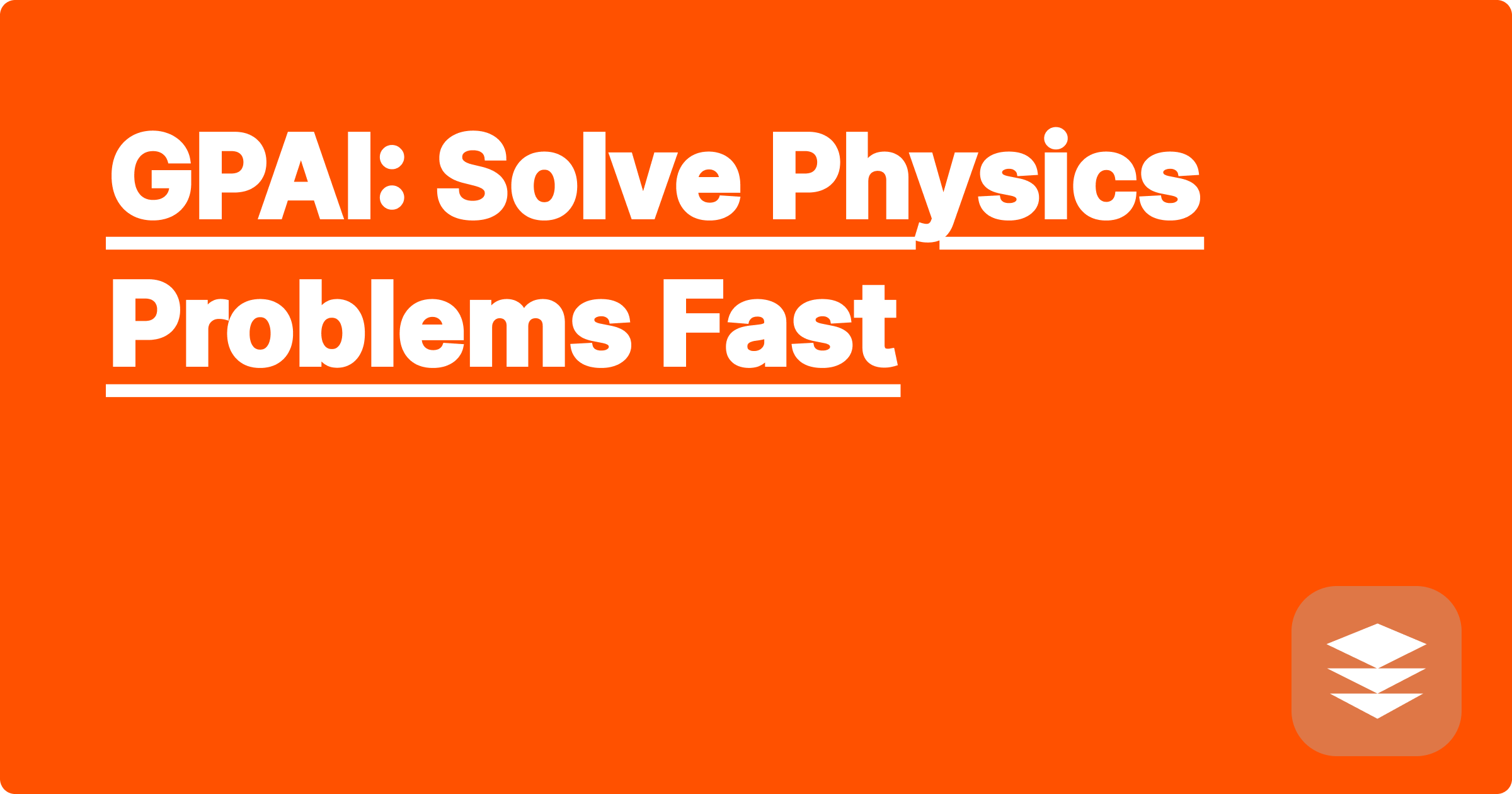
STEM fields, particularly physics, often present complex problems that require significant time and effort to solve. These challenges can range from understanding fundamental concepts to applying advanced mathematical techniques. Artificial intelligence (AI) offers a powerful new approach to tackling these difficulties, providing students and researchers with tools to accelerate their learning and research processes. AI can assist with everything from understanding complex theories to generating and checking solutions, ultimately enabling faster and more efficient problem-solving.
This newfound capability is transformative for STEM students and researchers. It allows students to grasp difficult concepts more quickly, freeing up time for deeper exploration and experimentation. Researchers can leverage AI to accelerate their work, exploring more hypotheses and analyzing larger datasets. This ultimately leads to faster scientific advancements and a deeper understanding of the world around us. Embracing AI tools is no longer optional, but rather a necessary skill for success in the rapidly evolving landscape of STEM education and research.
Physics problems, by their nature, often involve multiple steps, requiring a strong grasp of underlying principles and mathematical proficiency. Students often struggle with translating word problems into mathematical equations, choosing the correct formulas, and performing the necessary calculations. Furthermore, visualizing the problem and its solution can be a significant hurdle, especially in areas like mechanics, electromagnetism, and quantum physics. The sheer volume of practice problems assigned in typical physics courses can be overwhelming, leading to frustration and a superficial understanding of the material. This can hinder a student's ability to apply their knowledge to novel situations and ultimately limits their potential in the field.
AI-powered tools like ChatGPT, Claude, and Wolfram Alpha offer a revolutionary way to approach physics problem-solving. These tools can be used to break down complex problems into smaller, manageable steps, providing explanations and guidance along the way. They can assist in identifying relevant formulas, performing calculations, and even generating visualizations. Furthermore, these AI assistants can offer alternative approaches to solving a problem, broadening the student's understanding of the underlying concepts. By leveraging these tools, students can move beyond rote memorization and develop a deeper, more intuitive understanding of physics.
Begin by clearly defining the problem you want to solve. This involves stating the known variables, the unknown quantities you are trying to find, and any relevant constraints. Then, express the problem in a clear and concise manner that the AI can understand. This might involve writing out the problem statement verbatim or providing a simplified version. Next, select the appropriate AI tool for the task. For conceptual questions and explanations, ChatGPT or Claude might be more suitable. For symbolic calculations and visualizations, Wolfram Alpha is often a powerful choice. Input the problem into the chosen AI tool, ensuring that all variables and units are correctly specified. Carefully review the output provided by the AI. Check the units, the magnitude of the answer, and the overall logic of the solution. Finally, compare the AI-generated solution with your own understanding of the problem. This helps to identify any discrepancies and solidify your understanding of the underlying concepts.
Consider a classic physics problem: a projectile launched at an angle θ with initial velocity v₀. We might want to calculate the maximum height reached by the projectile. Using Wolfram Alpha, we can simply input "projectile motion v₀=20 m/s, θ=30 degrees, find maximum height." Wolfram Alpha will not only provide the numerical answer but also show the relevant equations and even generate a visual representation of the trajectory. Another example involves understanding the concept of electric flux. We could ask ChatGPT to "explain Gauss's law and provide an example." ChatGPT will generate a detailed explanation of the law, including its mathematical formulation, and offer practical examples of how it is applied in different scenarios. Finally, for a more complex problem involving, say, the Schrödinger equation in quantum mechanics, we could use Wolfram Alpha to solve the equation for specific potentials and visualize the resulting wave functions.
To maximize the benefits of AI in your STEM studies, actively engage with the tools. Don't simply rely on them for answers. Instead, use them as learning aids to enhance your understanding. Always try to solve the problem yourself before turning to the AI. This helps to identify your areas of weakness and allows you to focus your learning. Experiment with different AI tools to find the ones that best suit your learning style and the specific problem you are trying to solve. Critically evaluate the output provided by the AI. Don't blindly accept the answers. Instead, verify the results and ensure that they align with your understanding of the underlying concepts. Finally, remember that AI is a tool, not a replacement for learning. Use it wisely to supplement your studies and enhance your understanding, but don't let it become a crutch.
In conclusion, AI offers a powerful set of tools for accelerating problem-solving in STEM fields, particularly physics. By understanding how to effectively leverage these tools, students and researchers can significantly improve their learning and research outcomes. Embracing AI is not just about finding answers faster; it’s about developing a deeper understanding of the underlying concepts and gaining the skills necessary to thrive in the rapidly evolving world of science and technology. Start exploring these tools today and unlock your full potential in STEM.
GPAI: Solve Physics Problems Fast
Ace Chem Exams with GPAI's Cheatsheet
GPAI: Your Calculus Homework Hero
Conquer Finals: GPAI Study Guide
GPAI: Engineering Lab Data Ace
GPAI: Master Organic Chemistry
GPAI: Your Biology Exam Secret